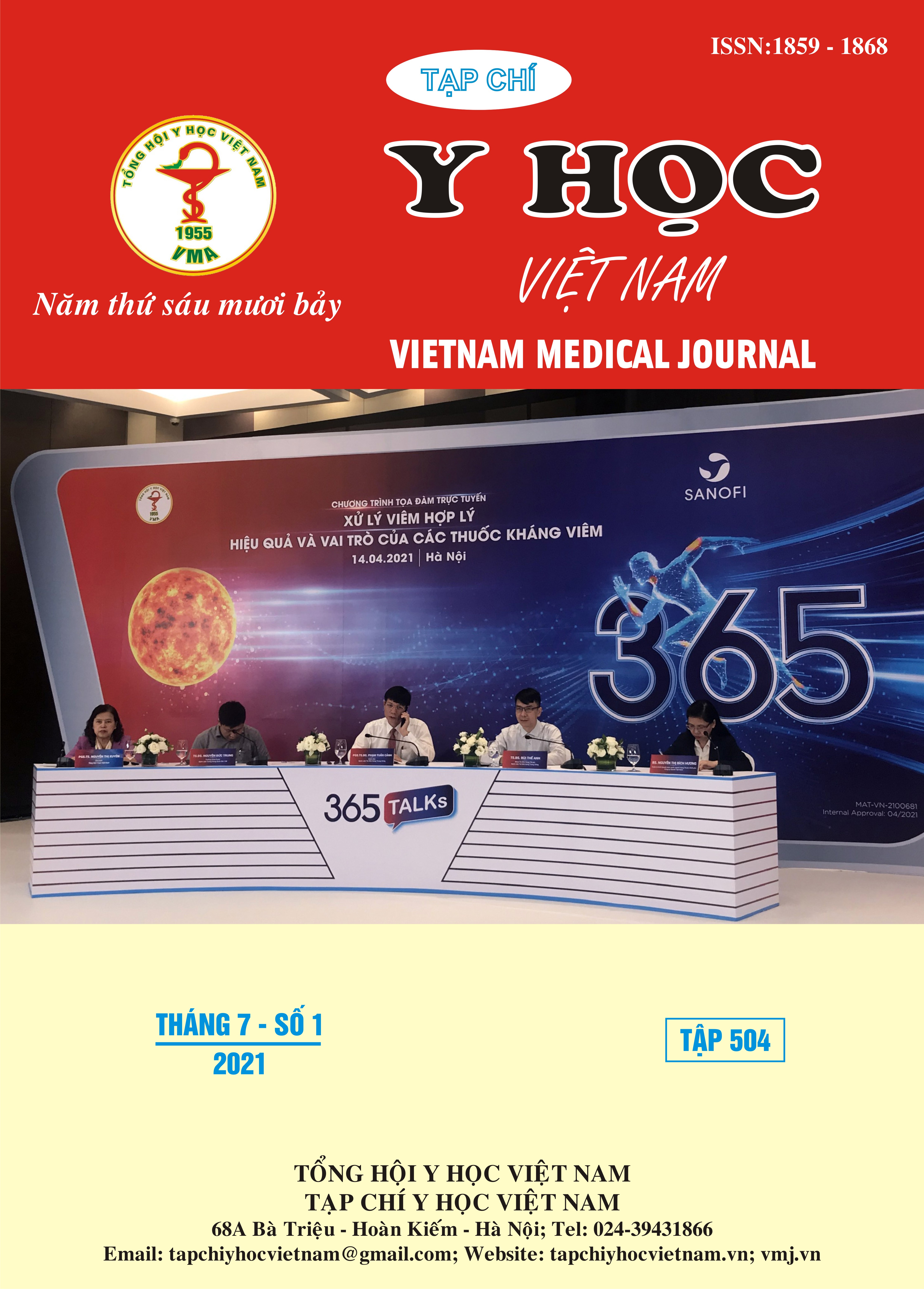THE EFFICACY OF MIRENA IN TREATMENT OF SOME BENIGN UTERINE DISEASES
Main Article Content
Abstract
Objectives: To review the effects of the IUD Mirena in treatment of some benign uterine diseases, particularly in reducing menstrual blood loss and dysmenorrhea. Subjects and Methods: prospective description of patients with dysmenorrhea and menorrhagia treated with Mirena, and evaluation of results after 6 months of use. Results: 55 patients were inserted Mirena. The assessment score of pain on the VAS scale decreased from 5.9 ± 4.3 to 1.4 ± 2.4 and a greater and more significant mean reduction occurred in the worst pain possible and very severe pain group. The mean number of bleeding days was not statistically significant (p = 0.885), but the rate of amenorrhea increased from 3.6% to 12.7%, and prolonged bleeding rate increased from 23.7% to 40%. The amount of blood loss decreased markedly, especially in the heavy and moderate bleeding groups. Conclusion: Mirena IUD is an effective treatment to alleviate the pain and reduce menstrual blood loss in some benign uterine diseases.
Article Details
Keywords
Intrauterine device, Mirena, dysmenorrhea, menorrhagia
References
2. G. A. Hawker, S. Mian, T. Kendzerska và cộng sự (2011). Measures of adult pain: Visual Analog Scale for Pain (VAS Pain), Numeric Rating Scale for Pain (NRS Pain), McGill Pain Questionnaire (MPQ), Short-Form McGill Pain Questionnaire (SF-MPQ), Chronic Pain Grade Scale (CPGS), Short Form-36 Bodily Pain Scale (SF-36 BPS), and Measure of Intermittent and Constant Osteoarthritis Pain (ICOAP). Arthritis Care Res (Hoboken), 63 Suppl 11, S240-252.
3. L. A. Douglass và A. M. Davis (2020). Assessment and Management of Heavy Menstrual Bleeding. JAMA, 323 (3), 270-271.
4. M. G. Munro, H. O. D. Critchley, M. S. Broder và cộng sự (2011). FIGO classification system (PALM-COEIN) for causes of abnormal uterine bleeding in nongravid women of reproductive age. International Journal of Gynecology & Obstetrics, 113 (1), 3-13.
5. K. H. Lee, J. K. Kim, M. A. Lee và cộng sự (2016). Relationship between uterine volume and discontinuation of treatment with levonorgestrel-releasing intrauterine devices in patients with adenomyosis. Archives of Gynecology and Obstetrics, 294 (3), 561-566.
6. J. Magalhães, J. M. Aldrighi và G. R. de Lima (2007). Uterine volume and menstrual patterns in users of the levonorgestrel-releasing intrauterine system with idiopathic menorrhagia or menorrhagia due to leiomyomas. Contraception, 75 (3), 193-198.
7. R. Varma, H. Soneja, K. Bhatia và cộng sự (2008). The effectiveness of a levonorgestrel-releasing intrauterine system (LNG-IUS) in the treatment of endometrial hyperplasia—A long-term follow-up study. European Journal of Obstetrics & Gynecology and Reproductive Biology, 139 (2), 169-175.
8. J. Struble, S. Reid và M. A. Bedaiwy (2016). Adenomyosis: A Clinical Review of a Challenging Gynecologic Condition. Journal of Minimally Invasive Gynecology, 23 (2), 164-185.
9. V. E. Radzinsky, M. B. Khamoshina, E. N. Nosenko và cộng sự (2016). Treatment strategies for pelvic pain associated with adenomyosis. Gynecological Endocrinology, 32 (sup2), 19-22.


